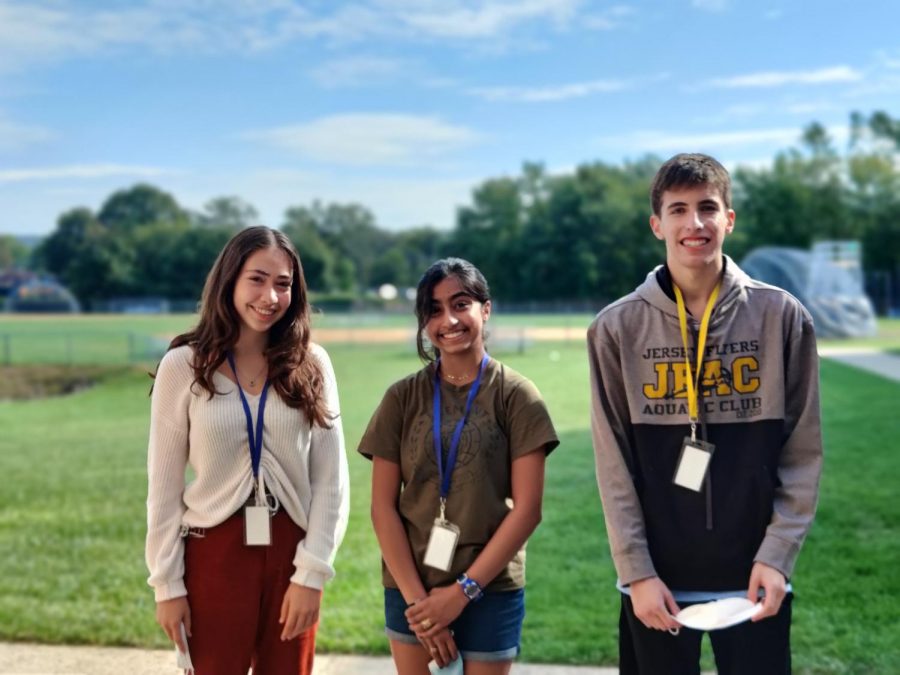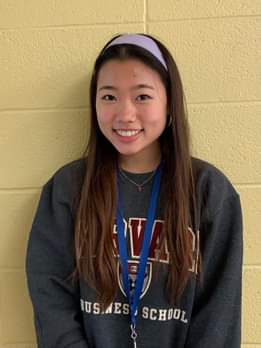THS Students Earn International Prestige through Science Research Studies
October 14, 2021
This year, Will Kaminski (’22), Tamar Peleg (’23), and Rhea Raghu (’22) each represented THS through his or her Science Research studies, for which Kaminski and Peleg earned international recognition and Raghu published her work.
The Methods of Science Research courses, headed up by Mrs. Helen Coyle, follow the SUNY Albany Research in the High School program, and students become immersed in a particular area of science in a three-year course sequence. “The Science Research Program is a unique opportunity in Tenafly High School. As part of the class, sophomores, juniors, and seniors work under the guidance of a mentor from a university to conduct university-level projects,” Peleg explained. “Students also participate in competitions and communicate the findings of their work.” Through a rigorous application process and a study of interest among students, the most capable and curious are accepted into the three-year program. “[It] is a program at THS that provides students with the opportunity to learn about the process of scientific research and all the methods involved in it, from formulating a question to how to construct a presentation for a competition,” Raghu explained.
Through their Science Research studies Kaminski, Peleg, and Raghu were each given the opportunities to challenge their inquiries and their minds. Through the contributions of their prodigious work, each of the students gained international recognition.
Kaminski and his US team (Simple Animation) were Global Finalists and won Honorable Mention in the EO Dashboard Hackathon. “Pretty much from the start of COVID, NASA, ESA, and JAXA worked on an Earth Observing dataset using satellites which contains a lot of information on different fields which COVID has affected,” Kaminski said. “Because of how important and new a massive dataset like this is, the organizations decided to hold a worldwide competition to see what people could do with the data.” Of 4,300 global teams, Kaminski and his team were ranked as part of the top 32. “I was put with a team of random other students throughout the US and was given an option of a topic to work on. We chose water quality and how it COVID affected it, specifically in Japan,” he said. Through his work and its recognition, Kaminski was given the opportunity to apply his studies to the real world in order to create a true impact. “It was really rewarding to find out that the judges appreciated our work because this is a project which has real world implications to help understand the effects of something we are still experiencing,” he said. “Hopefully, my future work can help solve some issues as well.”
Peleg was among one of the seventeen total international teams to progress to phase 2 of the Women in Data Science (WiDS) competition sponsored by Stanford University, of nearly 4,000 total participants from over 86 countries. “I created an algorithm to predict the presence or absence of Diabetes Mellitus in patients admitted to the Intensive Care Unit (ICU), who are typically confused or unresponsive at time of admission and therefore cannot provide an accurate medical history,” Peleg said. “I submitted the algorithm, which performed well, and advanced into Phase II of the competition titled ‘Excellence in Research Award,’ alongside 16 other participants.” In the second phase, Peleg detailed the designs of her project, and among the results published in August, she received an honorable mention. “The class and the competition gave tools in data science, bioinformatics, and health care that I wouldn’t have been exposed to otherwise [and I was able to learn] to read and compose scientific papers, present my findings at conferences, study independently, and acquire many other tools that are essential for scientific research,” she said. The process was definitely rewarding in terms of experience outside of the calculated classroom, and will only be a taste of her future success to come.
Raghu, along with her mentor and other scientists, was able to publish her work in the International Journal of Molecular Sciences. “My mentor, Dr. Eun Lee, some medical students from Virginia Commonwealth University, and I published an article titled “Overexpression of ERAP2N in Human Trophoblast Cells Promotes Cell Death,” Raghu said. “I was lucky enough to start working on this project after meeting my mentor [who then] introduced me to her team and the project during the wintertime and [I was able to work] with her one-on-one on this project.” While the project was incredibly demanding and mentally strenuous, the experience overall made it all worthwhile. “I feel incredibly grateful for having the opportunity since I know that this is something that not a lot of people my age get to experience,” Raghu said. “I loved the opportunity to turn the knowledge I had gained into something that people would genuinely use in research, not just internalizing the information for an exam and then forgetting it… I’m also really glad that I now have the chance to work on other projects in this field with my mentor and continue to research with her and VCU for the next few years!”
There is still so much in store for Kaminski, Peleg, and Raghu, and their future achievements are sure to continue creating an impact.

















































































































































